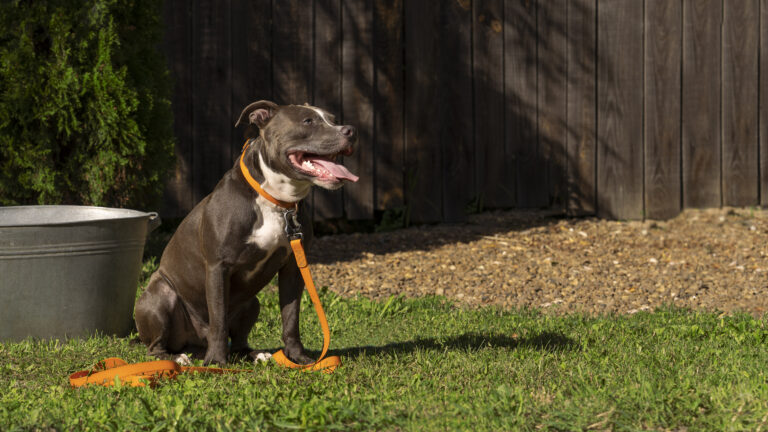Off-Leash Adventures Unleashed: Hiking Safety Tips for Happy Tails
A comprehensive guide to preparing for safe off-leash adventures with your dog, including training tips, safety precautions, and essential gear for hiking and outdoor activities.
Safety Tips for Hiking with Dogs Off-Leash
When hiking with your dog off-leash, it’s crucial to carry a first aid kit specifically designed for dogs to handle any injuries or emergencies that may arise during your outdoor adventure. This kit should include essentials such as bandages, antiseptic wipes, tweezers for removing ticks, and any necessary medications for your furry companion. By being prepared with a well-stocked first aid kit, you can address minor injuries promptly and ensure your dog’s well-being.
Additionally, after a hike, take the time to check your dog’s paws for cuts, thorns, or any other injuries they may have picked up along the trail. This simple practice is essential for preventing infections and addressing any discomfort your dog may be experiencing. By inspecting their paws thoroughly, you can catch any issues early and provide the necessary care to keep your dog healthy and happy. Furthermore, considering using a GPS tracker on your dog’s collar can offer peace of mind, allowing you to quickly locate them if they happen to wander off during your hike. This added layer of security can be invaluable, especially in unfamiliar or vast outdoor settings, ensuring that you can swiftly reunite with your furry friend in case they stray.
Introduction: Understanding the Significance of Off-Leash Training
Off-leash training is not just about giving dogs the freedom to roam without a leash; it is a fundamental aspect of responsible pet ownership that significantly benefits both dogs and their owners. By investing time and effort in off-leash training, dog owners can build a deeper connection with their furry companions based on trust and mutual understanding. For example, through off-leash training, dogs learn to rely on their owners for guidance and protection, strengthening the bond between them.
Moreover, off-leash training is essential for ensuring the safety of dogs during outdoor activities. Dogs that have undergone proper off-leash training are more likely to obey commands promptly, which is crucial when navigating potentially hazardous situations like encounters with wildlife or unexpected obstacles on the trail. This training also instills a sense of discipline in dogs, enabling them to enjoy their surroundings while staying within the owner’s control, promoting a harmonious experience for both the dog and the owner. By understanding the significance of off-leash training, dog owners can provide their pets with enriching experiences while maintaining a safe and enjoyable outdoor adventure environment.
Importance of Off-Leash Training for Dogs
Off-leash training is not only crucial for enhancing a dog’s social skills with other animals and people, but it also plays a vital role in preventing behavior issues like aggression or wandering off. For example, a well-trained dog is more likely to interact positively with other dogs on the trail, making hiking experiences enjoyable for both pets and owners. Moreover, off-leash trained dogs are less likely to chase wildlife or engage in confrontations, promoting a safer and more peaceful environment during outdoor adventures.
Additionally, proper off-leash training empowers dogs to exhibit better self-discipline and responsiveness to commands, which are paramount for their safety and the safety of others during hikes. Consider a scenario where a dog encounters a potentially dangerous situation while off-leash; a well-trained dog with reliable recall skills is more likely to respond promptly to the owner’s command to avoid harm. This ability to follow commands can prevent accidents or conflicts with wildlife, making off-leash training an indispensable aspect of preparing for outdoor activities with your furry companion.
 Safety Tips for Hiking with Dogs Off-Leash
Safety Tips for Hiking with Dogs Off-Leash
Ensuring the safety of your furry companion during off-leash adventures is paramount to a successful and worry-free hike. Beyond carrying a first aid kit tailored for dogs and checking their paws for injuries [4], there are additional precautions you can take. For instance, familiarizing yourself with the common poisonous plants along the trails you plan to hike can help prevent accidental ingestion by your dog, which could lead to severe health issues. One example is the toxic effects of plants like poison ivy or oak, which can cause skin irritation or more serious reactions if ingested.
Moreover, investing in a brightly colored or reflective collar for your dog can enhance their visibility, especially during low light conditions or in densely wooded areas. This simple measure can help prevent accidental separation or loss of your pet during the hike, ensuring they stay within sight at all times. An example of a reflective collar not only aids in visibility but also adds an extra layer of safety in case your adventure extends into the evening hours or dusk. Lastly, practicing basic canine first aid techniques, such as CPR for dogs, can equip you with the necessary skills to handle emergencies until veterinary care is available, further safeguarding your dog’s well-being on the trails.
 Dog-Friendly Hiking Trails and Outdoor Activities
Dog-Friendly Hiking Trails and Outdoor Activities
When choosing dog-friendly hiking trails, consider the varied terrain they offer to keep your furry friend mentally and physically engaged. For example, selecting trails that include hills, flat paths, and maybe even some water features can provide a diverse experience for your dog, keeping them excited and stimulated throughout the hike. Moreover, exploring different terrains can help enhance your dog’s physical fitness and endurance over time, making them better equipped for longer adventures in the future.
Before heading out on your outdoor excursion, make sure to acquaint yourself with local leash laws and any specific regulations that apply to the trails you plan to visit. Some trails may require dogs to be on a leash at all times, while others might have designated off-leash areas. Being aware of these rules not only ensures a smooth and hassle-free hike but also contributes to maintaining a positive relationship between hikers, dog owners, and other trail users. Additionally, understanding and respecting these regulations showcase responsible pet ownership, setting a good example for others on the trail.
When preparing for outdoor activities with your dog, always take into account the prevailing weather conditions and the time of day you plan to be out. For instance, if you’re hiking during the hot summer months, it’s crucial to choose early morning or late afternoon times to avoid extreme heat and prevent your dog from getting overheated. Similarly, in colder weather, ensuring your dog is adequately protected with a jacket or booties can help prevent issues like frostbite. By considering these factors beforehand, you can ensure a safe and enjoyable experience for both you and your canine companion during your outdoor adventures.
Canine Adventure Preparation and Gear
When gearing up for outdoor adventures with your canine companion, it’s essential to focus on training them with basic commands and leash walking skills. This preparation ensures that your dog is ready to navigate various terrains and situations safely. For instance, teaching your dog commands like “sit,” “stay,” and “come” can help maintain control and prevent them from wandering off during hikes. Additionally, leash training is crucial for areas where leashes are required, ensuring compliance with trail regulations and the safety of your dog and others.
Understanding the signs of heatstroke in dogs is also vital for adventure preparation. Dogs can easily overheat, especially during hot weather hikes, so being able to recognize symptoms such as excessive panting, drooling, or weakness is crucial for their well-being. Taking preventive measures like planning hikes during cooler times of the day, providing access to shade and water, and monitoring your dog’s behavior can help prevent heat-related issues. Moreover, investing in a dog-specific backpack equipped with essentials like water, food, and a collapsible bowl promotes hydration and sustenance during hikes, ensuring your dog stays energized and healthy. This gear not only adds convenience but also contributes to a memorable and enjoyable outdoor experience for both you and your furry friend.
Dog Recall Training Techniques
When working on improving your dog’s recall training, it’s essential to expose them to various environments to reinforce their response to commands effectively. For instance, practice recall exercises in a local park, at the beach, or even in your backyard to help your furry friend generalize the command in different situations. By doing so, your dog will learn to respond promptly regardless of the setting, making off-leash adventures safer and more enjoyable for both of you.
Positive reinforcement is a powerful tool when training your dog to come when called. For example, when your dog responds to a recall command promptly, reward them with their favorite treat or a quick play session with their beloved toy. This positive association encourages your dog to associate coming when called with a fun and rewarding experience. Over time, they will be more inclined to obey your commands eagerly, increasing their reliability and your peace of mind during off-leash hikes. Remember, patience and consistency are key elements in reinforcing recall training, so celebrate every small success along the way to build a strong foundation of trust and obedience with your canine companion.
 Hydration and Fitness Considerations for Dogs on Hikes
Hydration and Fitness Considerations for Dogs on Hikes
Ensuring your dog’s hydration and fitness levels are crucial elements to consider before embarking on any hiking adventure. Monitoring your furry companion for signs of dehydration, such as excessive panting or lethargy, is essential. Dogs can easily overheat during hikes, especially in warm weather, making it vital to offer water regularly to prevent dehydration and heatstroke. For example, if you notice your dog excessively panting or lagging behind during a hike, it’s a sign that they may need a water break to rehydrate and cool down.
In addition to hydration, tailoring the intensity and duration of hikes to your dog’s fitness level is paramount to prevent overexertion and fatigue. Just like humans, dogs have varying levels of physical fitness, so it’s crucial to consider their individual capabilities when planning a hiking route. For instance, if you have a senior dog or a breed not suited for strenuous activities, opt for shorter and less challenging trails to ensure a safe and enjoyable experience for your furry friend. By being mindful of your dog’s fitness level and adjusting the hike accordingly, you can prevent injuries and discomfort during the outing.



 Safety Tips for Hiking with Dogs Off-Leash
Safety Tips for Hiking with Dogs Off-Leash Dog-Friendly Hiking Trails and Outdoor Activities
Dog-Friendly Hiking Trails and Outdoor Activities Hydration and Fitness Considerations for Dogs on Hikes
Hydration and Fitness Considerations for Dogs on Hikes